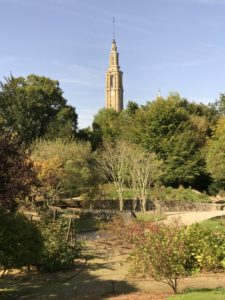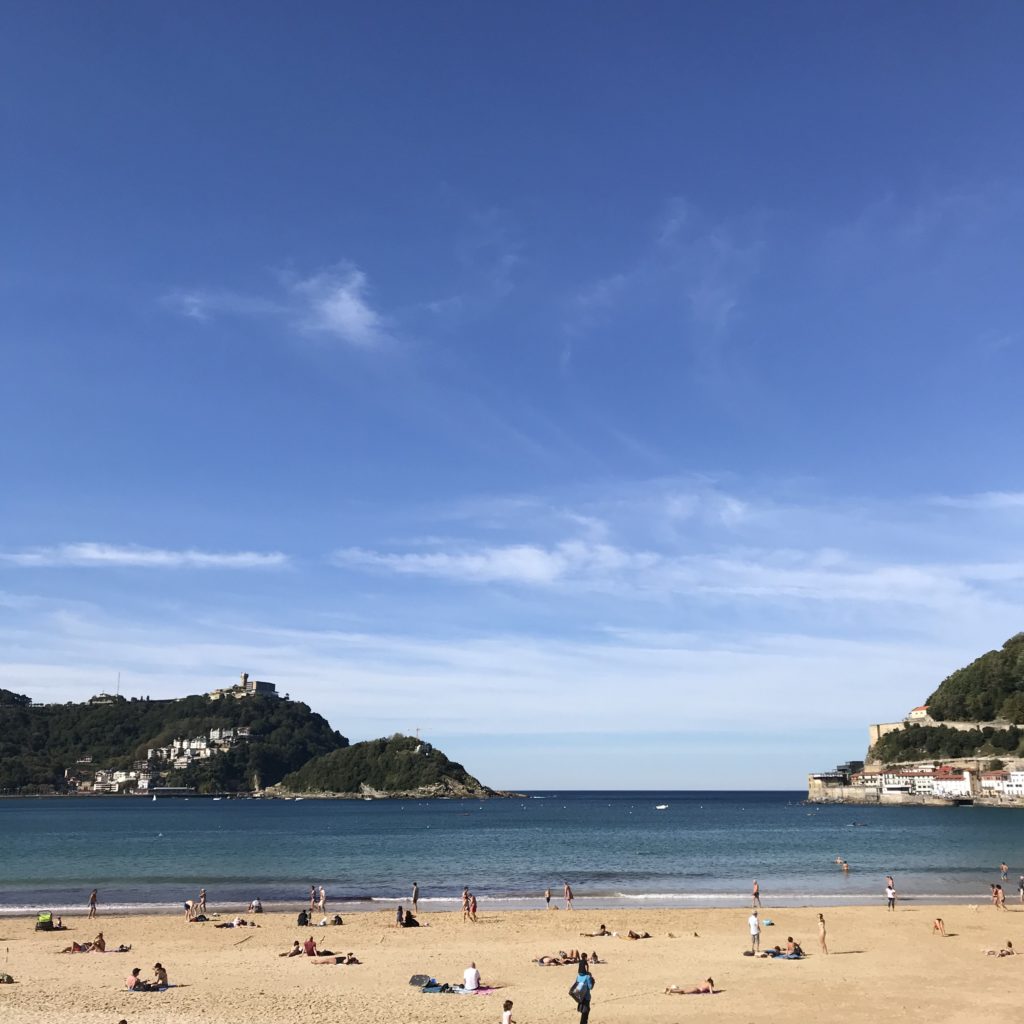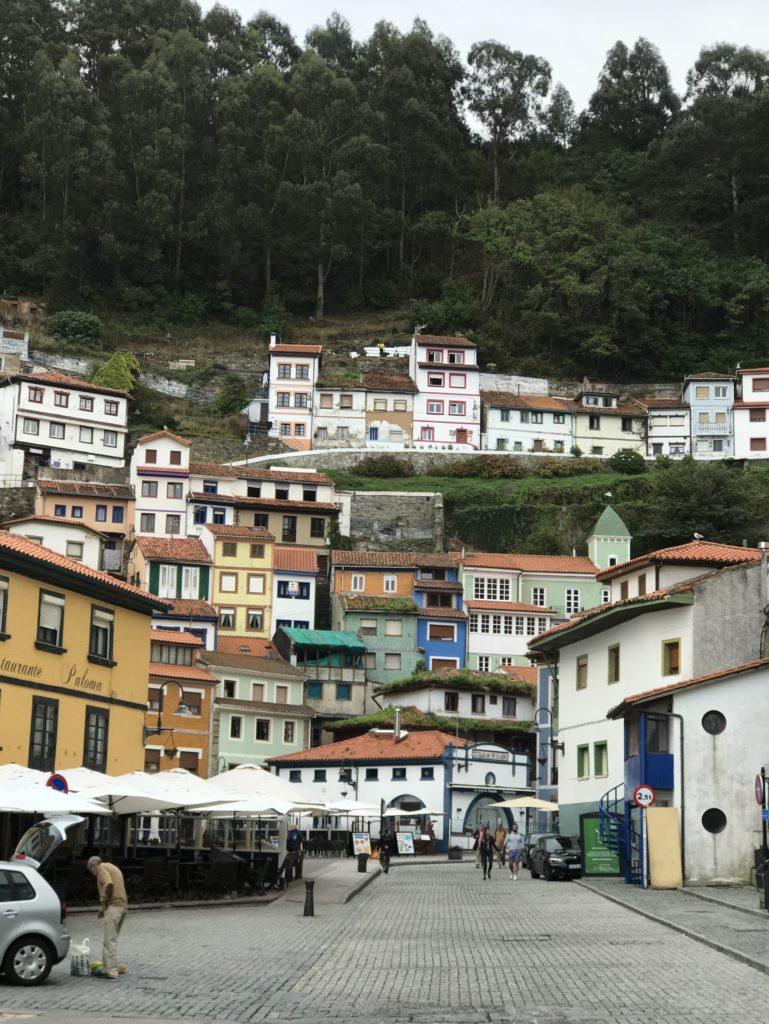Planes, Trains, and Spain
Guest post by: Noah Reyna is a Junior majoring in Finance. This Fall, Noah participated in the University of Navarra Exchange program.
What makes Pamplona such a great place to study abroad is the presence of a vast amount of transportation methods. Whether be it be via public buses, trains, private coach buses, or plane, travelling is surprisingly easy in and out of Pamplona.
I’ve learned this through my ventures outside of Pamplona the past month or so. The close proximity of such transportation has allowed me to travel to Gijón and San Sebastián, Spain, both of which are located in Northern Spain, as well as Bordeaux, France.
I took the Renfe train to  Gijón and the trains are much more comfortable than anticipated. The seats are quite large and have a small compartment area for trash in between the seats in front of you.
Gijón and the trains are much more comfortable than anticipated. The seats are quite large and have a small compartment area for trash in between the seats in front of you.
Gijón, like the other Spanish cities that I have visited so far, is extremely walkable. I was able to walk from my Airbnb to the West Beach Promenade after grabbing some brunch in the city center. English was more widely spoken here, and I heard other languages such as Russian as well, presumably due to Gijón being a larger and more touristy area. Besides for watersports, there were also museums for history buffs to visit and botanical gardens for nature lovers.
I took a coach bus to Cudillero, a nearby fishing town that is located in rural Asturias, the province where Gijón is situated. The broad reach of even the coaches is surprising to me considering that Cudillero is a small town of about 5000 people.
I took a private coach bus for my journey from Pamplona to San Sebastián, as it was more inexpensive than the Renfe train. The private coach bus, provided through coach company Alsa, was actually more comfortable than the train since they had Wi-Fi and outlets to charge electronic devices. And, while I only spent a day in San Sebastián, it still proved to be an enjoyable experience. Of course I ventured to the beaches for sightseeing, but also hiked up to the Batería de Santiago where I was able to get a great view of th e beach and cityscape. A final highlight of San Sebastián was having the chance to eat cheesecake from La Viña—and as a former employee of The Cheesecake Factory, I can say that it was infinitely better than theirs.
e beach and cityscape. A final highlight of San Sebastián was having the chance to eat cheesecake from La Viña—and as a former employee of The Cheesecake Factory, I can say that it was infinitely better than theirs.
Finally, the cheapest method to get to Bordeaux was renting a car to drive up there. Compared to the United States, driving here is pretty terrifying—the speed limits on the highways are faster (about 130 kilometers per hour, or about 78 miles per hour), and many drivers, especially in Spain, drive much faster than it. I definitely got honked at a lot by the French for not knowing how to drive up to their expectations!
Upon my arrival in Bordeaux I went to the Dune of Pilat, which was absolutely breathtaking. It was breathtaking in terms of both having to hike up a 45 degree slant of sand to get to the viewpoint and in terms of the view upon my reach of the summit! I also heard a good mix of people here, from Spain, Germany, and France.
Another great aspect of European cities is the great amount of parks that they have. During my time in Bordeaux, I went to the Jardin Public, a wonderful park that has a large walking perimeter and garden in it. It is a perfect spot for both the amateur and professional photographer due to the vast amount of both plants and buildings inside the park.
Upon reflection, access to a large medium of transportation methods has allowed me to travel in both Spain and beyond. Cities outside of Pamplona continue to be walkable, expanding even more one’s abilities to travel. In terms of my experience, I feel as if it has allowed me to become immersed in different cultures of different regions of Spain and France and thus improving my adaptability to different cultures, which I hope to apply to the workplace if I do end up having a job that requires travel and interaction with international culture. 

